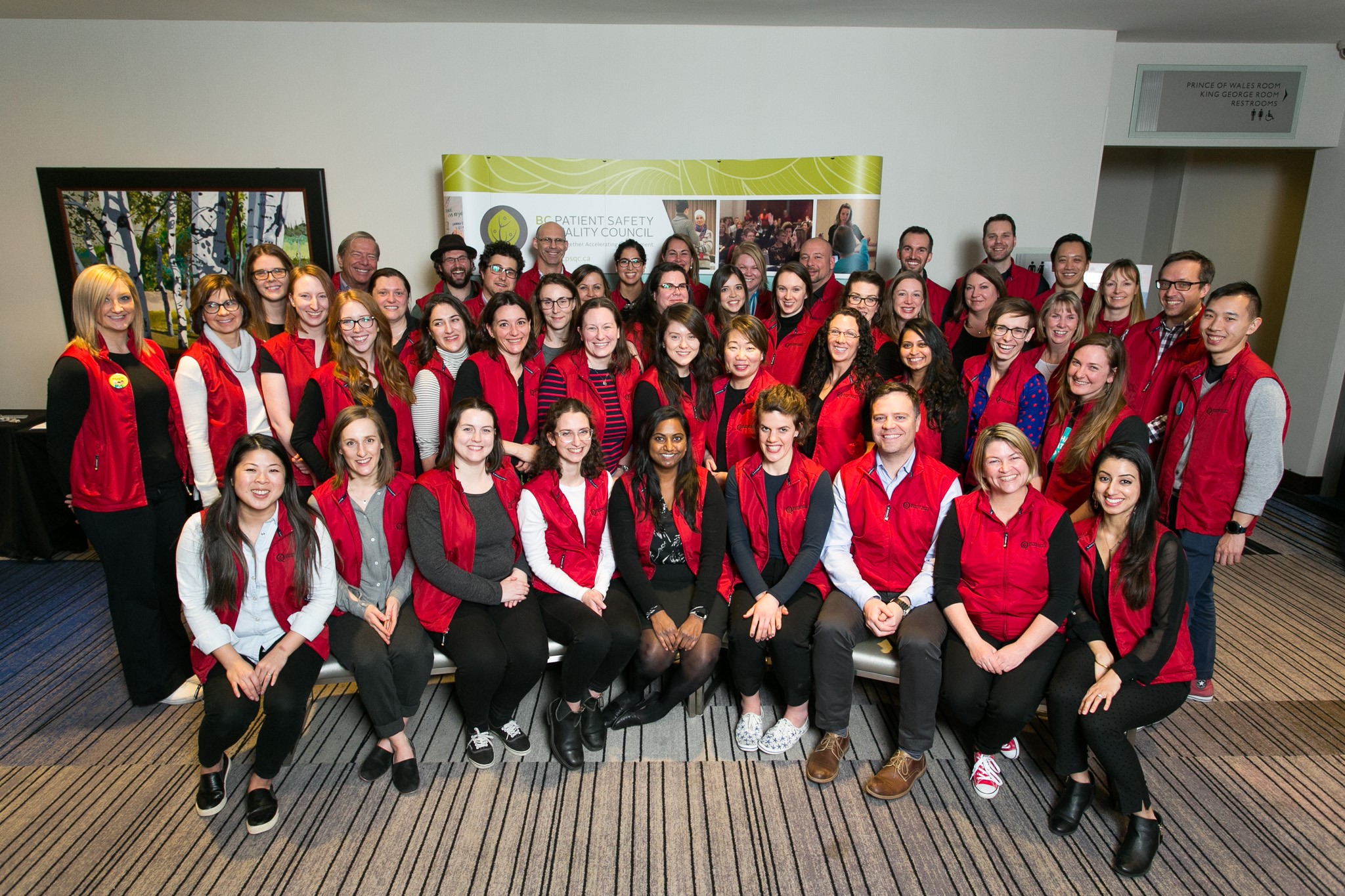Posted • Last updated
Categories: News & Events
The BC Patient Safety & Quality Council, which administers of the Patient Voices Network (PVN), connects patients and health care teams to information that can help create meaningful opportunities to work together. We’ve changed the network’s newsletter to showcase what’s happening across BC and share information that helps you work together. If you have any great story ideas, please email info@patientvoices.ca.
In this issue:
Word in the Network
Regional Round-Up
Best and Brightest – Top 5 This Week
PVN Spotlight
Word in the Network
What We Heard – PVN Member Survey and Twitter Chat
COVID-19 is the focus right now. That was the overall theme of the feedback from our member survey and twitter chat. Our partners want to know how patients are being engaged during COVID-19 and most importantly, how can they can help. Over 100 patient partners participated in the survey and 15 joined the twitter chat. Although COVID-19 was the focus, participants highlighted three PVN areas that they would like to see prioritized during this time:
- Connection before content: How can PVN platforms (like WebEx) be used in non-scripted way to connect and share, human to human?
- Lean into Learning with Purpose: Can we tap into relevant topics and speakers that relate to today’s patient engagement landscape?
- Shared Guidance: Is there an avenue for a more active presence in PVN activity support?
We want you to know that we have heard your ideas and will be launching a series of engagement opportunities that give you the chance to work with the council team as we flesh out these ideas and more; reinforcing the positive contributions towards the future. This new section, PVN Internal Opportunities, will be part of the weekly opportunity newsletter. These opportunities will be your chance to co-develop by providing your insights and ideas to make PVN a shining example of how we can work together for improvements!
Regional Round-Up
Lower Mainland/Fraser
Five PVN members participated in a Quality Academy world café, talking about what really matters to patient partners when they are asked to work on quality improvement projects. As partners in a working group with BCPSQC, the they are co-developing a structure and guidelines to these sessions for future patient partners.
Island
Great resources have been created to support patients, families and care givers on the Island.
Ways for the public to support the COVID-19 response: https://www.islandhealth.ca/learn-about-health/covid-19/support-our-covid-19-response
Information about COVID-19, how to protect yourself, your family and your community and what to do if you suspect you have the virus: www.islandhealth.ca/covid19
You may wish to follow @VanIslandHealth on Twitter, Facebook or Instagram for COVID-19 news and statements, stories from the frontlines and health tips: #Covid19IslandHealth.
North
Northern Health Physician Quality Improvement, the Practice Support Program and the BCPSQC are assisting patient partners in how to participate in a video conference training event. This PVN learning opportunity has come as a result of physicians hosting video conference appointments with patients and the need to build capacity in the public in how to participate in a video conference. Nineteen patient partners participated in an online Zoom meeting and learned about how to attend a doctor’s appointment via video conferencing.
Interior
Two patient partners from Fort Nelson and Castlegar virtually attended the Rural, Remote and First Nations Citizens Discussion Group. This partnership between the Rural Coordinating Centre of BC (RCCbc), the BC Rural Health Network (BCRHN) and the BCPSQC talked about four priority topics: culturally safe care, transportation, virtual care and team-based care.
Insights from this discussion will be shared with the provincial partnership table which includes many of the provinces health system policy makers, administration, providers, academia (research, learners) and linked sectors (non for profit and industry.)
Best and Brightest – Top 5 This Week
We have chosen five of the best and brightest resources to support you in working together. This is not an exhaustive list, nor is it an endorsement of specific resources or opinions.
- Public Health & COVID-19, The Public Health Agency of BC and PlaceSpeak – BC
This secure digital community platform is available to citizens of BC to share issues and questions related to COVID 19 and connect with helpful resources in their communities while practicing social distancing and self-isolation. It includes polls, surveys, discussion questions, information about online events, the latest news, and evidence-based resources on the pandemic. This site will gather local, provincial, national and international information designed to support BC citizens and communities as they grapple with COVID -19.
https://phabc.org/phabc-covid-19-citizen-engagement-resource-platform/
- IAP2 Canada COVID-19, The International Association for Public Participation – Canada
As public participation changes during COVID-19, so do the resources necessary to do this well in a virtual world. IAP2 has created a page where you can find resources, tools and expert advice on how to navigate engagement in this changing world.
https://iap2canada.ca/COVID-19-Public-Participation-Resources
- Patient & Family Centered Strategies in the time of COVID-19 Webinar, Institute for Patient and Family Centred Care – USA
This provides insights and hope during this stressful time. Honoring the essential partnerships developed with patients, families, and communities is important especially now. IPFCC reached out to patient- and family-centered leaders working in the field to identify emerging best practices and resources.
https://www.ipfcc.org/events/webinar-recordings.html
- Bang the table – Engaging Through a Crisis, Bang the Table – USA
This presentation was mostly focused on the Bang the Table tool: Engagement HQ. ‘Tips for Going Digital.’ The helpful moments in this webinar were speaking about FB live streaming, mostly focussed on Community Engagement. It includes tips on Live Streaming (Facebook), online consultations and document reviews. Bang the Table hosts several resources that help people connect digitally. You can download some of the resources for free.
https://www.bangthetable.com/blog/covid-19/
- The views of patients and the public should be included in policy responses to covid-19 Opinion, Kaisa Immonen, Director of Policy – European Patients’ Forum
In one of the most shared opinion pieces from the British Medical Journal Opinion in social media right now, Ms. Immonen poses some food for thought about the connection of the patients’ voice during COVID-19.
https://blogs.bmj.com/bmj/2020/03/30/the-views-of-patients-and-the-public-should-be-included-in-policy-responses-to-covid-19/</a >
PVN Spotlight
Written by Kim Eggers, a PVN Patient Partner

Most people I interact with would not know why and how I work with various health care partners as a PVN Patient Partner, so I thought I’d share my story here. It started about seven years ago when I began to experience serious health problems, one after another. That was when my sometimes deeply frustrating, but enlightening, education about our provincial health care system started.
Unfortunately for me, I often fell through the cracks of an overly stressed health care system, and my health ended up declining because of that. I was feeling hopeless and powerless when serendipity stepped in: I received my city’s volunteer newsletter, and something about a Patient Voices Network caught my eye. It seemed like a way for patients to participate in health care improvement, and I was curious about the project.
I contacted the PVN Engagement Leader in my region at that time and he kindly agreed to meet and give me the run-down. Basically, it was an organization that paired up volunteers with health care providers to work together to implement a health care system that works well for everyone. Throughout the world, this type of model had brought better outcomes for all involved, and I was immediately hooked by the idea!
Starting Out With PVN
I’ve now been a patient partner for almost five years and participated in many different engagements, I prefer the engagements at the level of collaborate. I’ve been with groups that really, intuitively understood what it means to include the patient partner as an equal team member. I’ve also been in groups that did not – and everything in between. The person- and family-centred care (PFCC) model is relatively new to British Columbia and, as such, will take time to fully implement.
I started out at the level of involvement I was most comfortable with, filling out online surveys and participating in group teleconferences that brought together many patient partners. One of them was a call with the Ministry of Health that had over 100 participants! Then I found myself saying “yes” to things I had never imagined myself doing, for example:
- Speaking at health care leaders’ conferences;
- Working with various groups to implement better person- and family-centred health care ideas;
- Co-chairing local health care committees and working as a liaison between some of them; and
- Adding the patient’s voice to foundational PFCC documents for my health district, as well as to a training module for physicians in my district.
Five years as a Patient Partner and Going Strong!
I’m currently on two committees: one local and one provincial. I’ve been with the BC Emergency Medicine Network (BC EMN) for two and a half years as a member of their Advisory Committee, which focuses on improving health care throughout emergency departments in the province. It’s a wonderful example of a group that strives to ensure that the patient partner has an equal voice at the table!
Initially, BC EMN brought onboard two patient partners, myself and one other gentleman. Now, there are four of us, with two on the Management Committee. They’ve ensured that I was always able to participate in a meaningful manner. For example, I was on teams that wrote articles for medical journals and have worked on the patient information sheets given to patients being discharged from emergency rooms. I’ve also had the opportunity to help staff the network’s information booth at a BC Support Unit convention.
Recently, I was part of the management team which interviewed candidates for replacing a key network management team member during her maternity leave. And now, as BC EMN forms a Patient Council, I will have the pleasure of co-chairing that. I’m currently working with one of the network’s managers to interview and help choose the members of that group.
More and more, as I’ve stepped out of my comfort zone, I can contribute in a deeper and more meaningful way to BC’s health care system. I’ve always ensured that the patient and family’s point of view is in the room and that our voice is heard. Because in the end, it is our health care.
Author: the BC Patient Safety & Quality Council team


